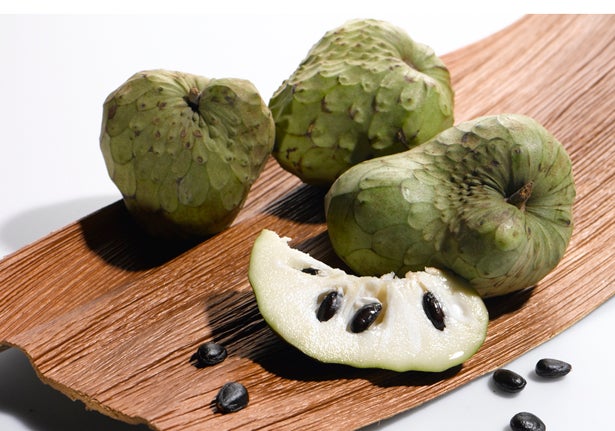Heading out the door? Read this article on the new Outside+ app available now on iOS devices for members! Download the app.

Don’t let cherimoya’s reptilian appearance deter you: this tropical fruit tastes like a cross between pineapple, mango, coconut, and vanilla. With its sweet, white flesh and velvety texture, cherimoya is also called custard apple.
Pick
Choose cherimoyas that are uniformly green, heavy for their size, firm, and free of cracks or soft spots. Ripen the fruit at room temperature away from direct sunlight until it begins to darken and yield to slight pressure like an avocado, says George McMangle, of Grove Stand in Fallbrook, Calif. Once ripe, eat promptly or store in the fridge for no more than three days, he advises.
Prep
To serve, McMangle suggests slicing the fruit in half, discarding the seeds, and scooping out the custard-like flesh with a spoon. Alternatively, peel with a paring knife, and cut flesh into cubes for salads, or purée and use in tarts, pancake batter, puddings, or quick breads. “The creamy texture is also ideal for making sherbet, ice cream, and smoothies,” McMangle says.
Try This
• Place cherimoya pulp in a blender along with a coconut beverage, silken tofu, cashew butter, vanilla extract, and ice cubes; whirl into a tropical-tasting smoothie.
• For a salsa to complement tempeh tacos, combine diced cherimoya, red bell pepper, red onion, jalapeño, mint, and orange zest.
• Simmer together steel-cut oats, cherimoya purée, almond milk, ground ginger, and cinnamon for a hearty breakfast porridge.